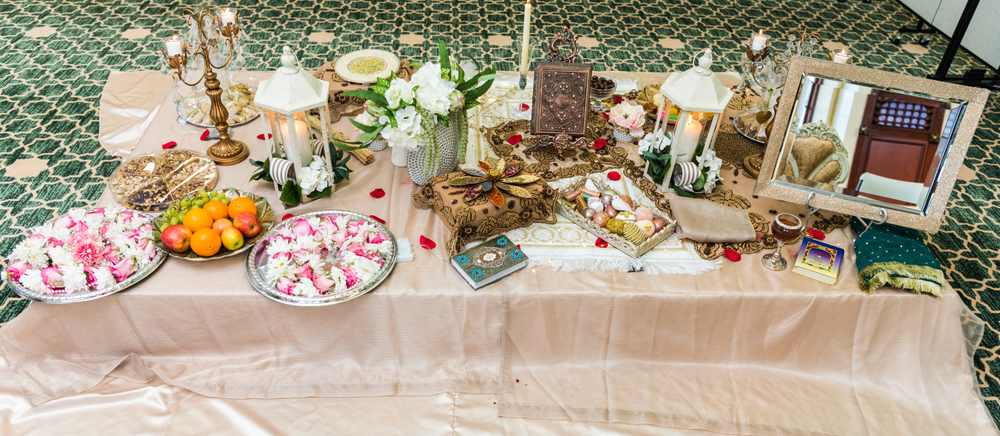
Modern wedding traditions tend to be steeped in the waters of a nation’s history. For example, a majority of the rituals practiced during nuptials in Iran come from Persian wedding traditions. This is largely because Iran was known as Persia for most of modern history, finally changing officially to Iran in 1935. However, a vast majority of the customs that persist to today can be traced back to Persia.
Whether you’ll be attending a wedding featuring Persian traditions as a guest or want to infuse some aspects of your culture into your own big day, there are many interesting customs to learn more about. Consider these rituals and discover the meaning behind each.
The Sofreh Aghd
One of the most important components of the Persian wedding is Sofreh Aghd. The term refers to the wedding table featured during the ceremony. The couple sits in front of the large table during the wedding, which is covered with a variety of items of significance. Though the items can seem disparate at first, the symbolic meaning behind the full spread and table is that of a shared journey between the couple. Though their lives have been separate up until this point, the table joins them together.
Items typically found spread across the table include a variety of important herbs and spices like black tea leaves, frankincense, salt, and poppy seeds. Pastries like almond cookies and Iranian marzipan are also included; they are typically given to the guests after the ceremony is completed. Other items of significance include the Mirror of Fate, two candelabras, coins, blessed fruit like pomegranate, sacred texts, and an assortment of items associated with fertility. Though each Sofreh Aghd will be unique to the couple getting married, the general layout tends to follow the same design.
The Honey
One of the items included on the wedding table is a bowl of honey. On a symbolic level, the honey is meant to represent a sense of sweetness. Once the couple has been officially wed, the bowl will be displayed before them. The couple will then each place a pinky in the bowl and feed each other a bit of honey. The main idea here is that the newlyweds are blessing each other with many years of happiness by feeding each other something sweet and delicious during the wedding.
The Chuppah
Another popular feature from the many Persian wedding traditions is the chuppah. Essentially, this item is a canopy that the couple stands beneath during the ceremony. Many people might be familiar with this type of symbolic decor from Jewish weddings, though the custom is present in a variety of cultures and belief systems in the Middle East and related regions. In Iran, the canopy is usually carried by women who are very close to the couple, including sisters and childhood friends. The canopy can be decorated to the couple’s specifications, allowing for a bit of creative freedom in the final product.
The Flower Petals
Many Westerners are familiar with the wedding tradition of tossing the bouquet. However, there is a different take on this custom in Persian culture. At the end of the night, the couple will dance while being surrounded by family and friends. The guests will then take part in the gol baroon, which involves throwing handfuls of flower petals at the couple as they dance. Loosely translated to mean “flower dance,” this portion of the reception is meant to close out the evening and provide a final moment to wish luck and love on the couple.
Though Persia has been Iran for practically a century now, plenty of the old Persian wedding traditions persist. Looking back on these rituals can uncover some fascinating facts about where modern traditions come from and the significance of each component.

